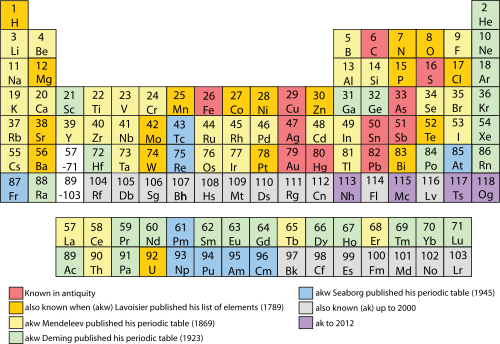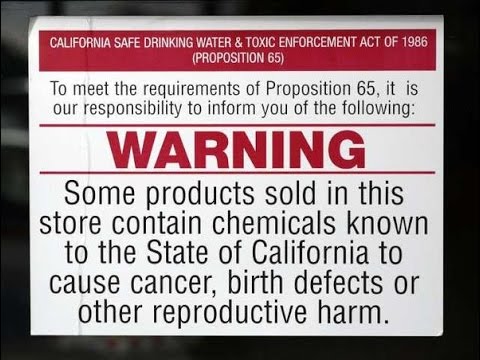Yeah I am well aware. And alpha/beta emitters are much more dangerous if ingested than external exposure.
Also, I don't have a supervisor, and have to rely on myself for my own safety checks.
Also, the guy who got the radioisotope on his boots, why was he not wearing impermeable over-shoe 'gloves' (presume you'll know what I mean there, disposable 'shoe gloves') that are single use.
And as you remark about isotopes with short half-lives, those are the main ones I'd want to work with in the first place, for exactly that reason. Any contaminated equipment could be tossed in a lead pig and left until its fully decayed twice over before reopening it (in the case of something that wasn't disposable of course)
And an acrylic cube, surrounded by lead, in another acrylic box, in a freezer/fridge? for a beta emitter? and of course, you don't know me, but I do not just do what many other self-employed, self-driven and autodidactic chemists/biologists might, and often do, do. And just throw away hazmat waste down the drains (that said, if I did that, I wouldn't have a drain anymore, I'd more than likely have a big smoking, hissing crater that throws up sparks whenever it rains.
I'm not just careful with my waste, actually I dispose of very little. I can't actually remember (shit memory not withstanding, but in this case, time is the cause) the last time I had to actually dispose of any chemical waste. Almost everything bar the dreaded polymerized organic tarry shite kind of thing (which gets burnt) gets recycled. I don't (save for working on a scale of a few ml to tens of ml and in the case of not-too-awful for the environment solvents) dump them after use, even in a chemical waste dump. I distill them off, and redistill them, then assign the particular quantity to performing the same reaction as it was used for in the first place unless something occurs to make it untenable. Although solvents that exist as cryogenic liquids, those for practical reasons are an exception (such as liquid NH3 fr.ex) since recovery of such a cheap and overall not too noxious when diluted away and evaporated (or better, led in the vapor phase, into a container of HCl or other mineral acid, or organic acid to recover the ammonia as say, the chloride, or the useful ammonium formate, ammonium acetate salts). Heavy metals compounds (typically ending up as oxides) get smelted down, and in the case of the more common ones, sold for scrap metal (E.g lead, beyond my needs for lead metal and Pb compounds), mercury that gets recovered, accounted for and kept for personal re-use, with every possible effort made to account for each and every little droplet as best as can be done, soluble salt solutions treated with fine copper powder, to plate out the Hg as a thin surface layer that can then be filtered off and the Hg recovered) and if I ever end up working with thallium, of course that'd be recovered as the metal, and any Cd or cadmium compounds that come through the lab, they too get recovered and kept for reuse. I won't even chuck away mercury batteries or Ni-CAD cells (partly for environmental/toxicity reasons, although partly because in the case of many, if not most battery cell types there is SOMETHING in there that I want to take out of them. Throw a Li (metal) battery away? you must be kidding. Got piles of E-cig batteries that died due to a circuit connection breaking, wires coming off etc. that are still charged, and despite having a jar of reagent-grade lithium as reasonably thick squareish slices, stored under argon, the jar neck teflon-taped to the point of being the alkali metal equivalent of autoerotic asphyxiation, inside an inner bag, outside of which has a couple of inches of a mixture of anhydrous CaCl2 and fine magnesium dust to serve as an O2 absorbent (and despite there being no oil in there whatsoever, it nevertheless has kept just as well as the day the packet was first opened) I still value the thin, thin foil form to be ripped out of batteries for a Birch-Benkeser reduction variant which employs rather than cryogenic liquid NH3, a continual stream of NH3 gas being passed into diethyl or diisopropyl ether, protected by a flow of argon, or at least a blanket of Ar, and battery lithium, after being wiped clean under ether or something like pentane, to rid it of electrolytes, sliced up into fine little tiny shreds. The large surface area and the metal being in the form of a thin foil permit it to react in a reasonable time to form a solvated electron ethereal solution (takes an hour or so at least, works best with an aquarium diffuser airstone to lead in the predried NH3 stream) but a dark, dark violet blackish-blue solution does indeed form, and this does, indeed, serve to reduce the same sorts of substrates as would be reduced if the reaction took place in anhydrous ammonia in the liquid phase. Still has to be dry of course (CaO being the favoured base to liberate the NH3 from an ammonium salt since that way H2O addition can be tightly controlled with a pressure-equalized addition funnel, and the CaO also serves as a dessicant, although its still a good idea to pass it through a drying tube packed with more quicklime before through a condenser running cold water to help take away some of the heat from the rather exothermic hydration of the CaO, or alternatively barium oxide can be used) and unlike using hydroxides, there is no inherent generation of water from the reaction between the base and the salt.
And as for recycling things, even the likes of MnO2 from batteries is recycled, dissolved in acid to give a soluble salt and either used as such after cleaning it up, filtering off the carbon crap etc. or (currently trying to figure out how to recover it, given the reactive nature of the metal) thermited to reduce it to elemental Mn. (don't you just love thermite reactions? so useful. Just recently made some elemental silicon that way, from some scrap potassium silicate (treated with sulfuric acid, the potassium sulfate washed out and used as a dessicant, whilst the precipitated very fine silica was mixed with aluminium dust and then set ablaze in a closed crucible, and the only thing to go down the drains was some inert Al-based slag after dissolving out the oxides with concentrated sulfuric, plus a little remaining 98% H2SO4, followed down the drains with a goodly squirt-down from the garden hose. And since people swallow and shit out aluminium hydroxide IIRC in some antacids, and IIRC alum or something like it is used as a flocculant in water supply treatment, and folk use conc. sulfuric as drain cleaner, IMO no wrong done. nothing went down the drain that would pollute awfully And left me with some nuggets of elemental silicon for an element collection (tested with a little conc. NaOH, which also went down the drain, and is also commonly used for unblocking drains and shitters, to ensure that the nuggets of metal, once they stopped glowing blazing hot from the aluminothermic reduction, were not molten Al, a total absence of hydrogen evolution proved, since the only other metal/metalloid present was potassium or aluminium, and it certainly was not potassium, which would have been blindingly buggering obvious to even the most amateur chemist when tested with NaOH solution in water

and other than that, sulfate, and sulfur would be vaporized away to nothing (well, SO2/SO3) in a thermite-temperature reaction and alum would be soluble in H2O and nonmetallic, it had therefore, to have been Si.
(lol that is the kind of thing that ends up happening when I can't sleep, or get comfortable lying down. To the lab I go, and out comes the glassware, crucibles, electrodes and the like and 'things' start to happen

) I'm not above grabbing a midnight snack. But am more likely to go for a midnight iodine monochloride synthesis/distillation, CrO2Cl2 synthesis, liberating Br2 from bromides, go distill some ether from an alcohol and hot, conc. H2SO4)
The problem is, its just so much more INTERESTING than sleeping. They say the devil makes work for idle hands. In my case, he doesn't, because I'll already have got in first.




